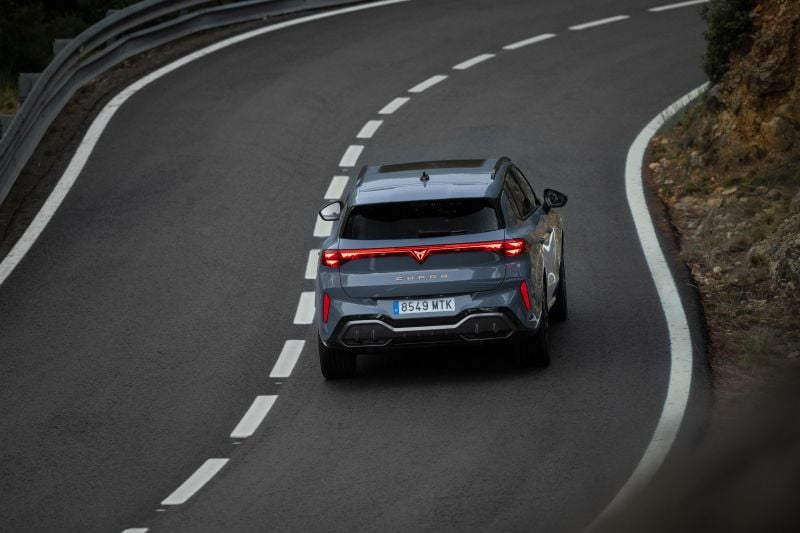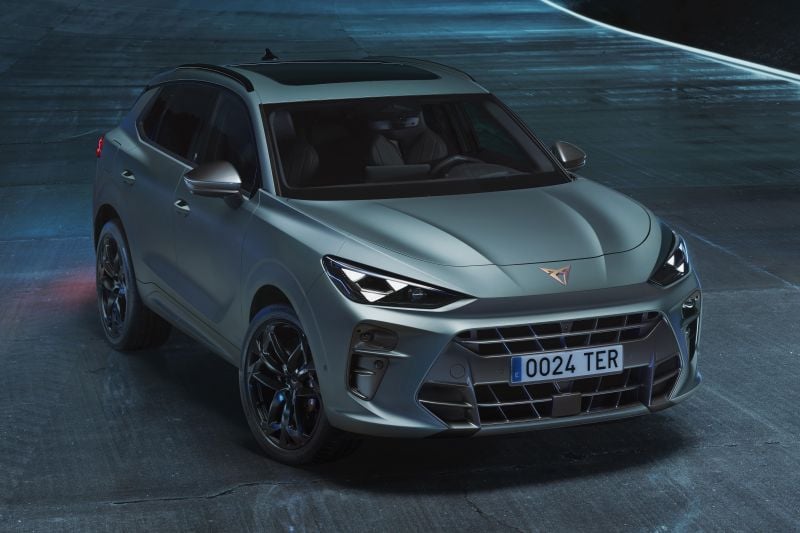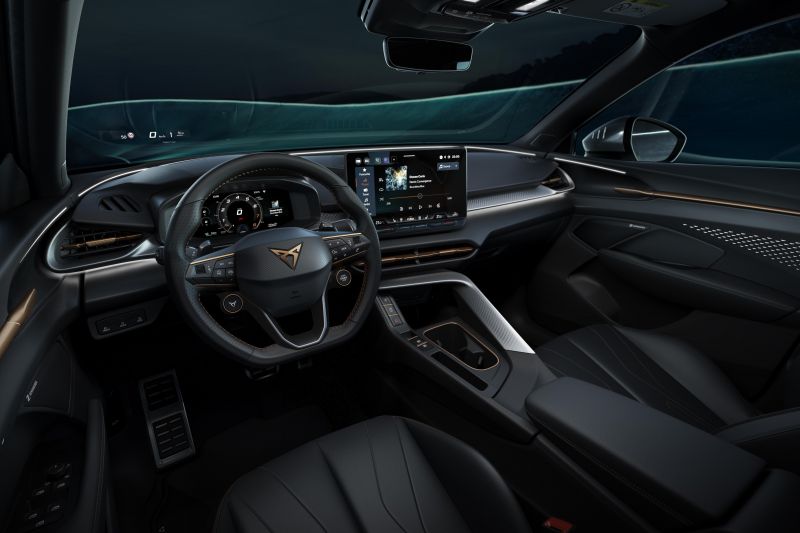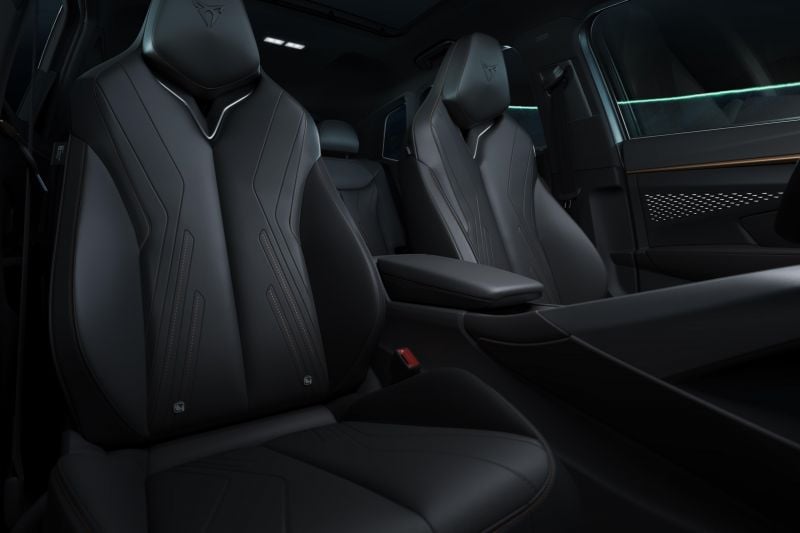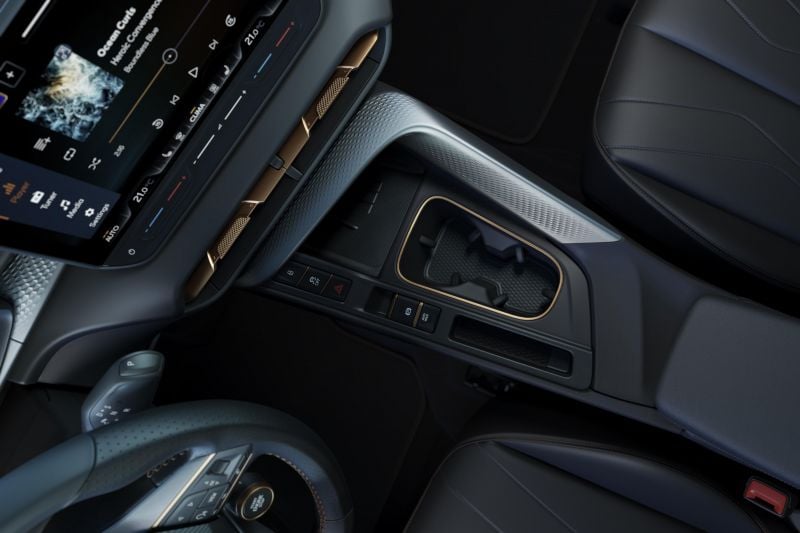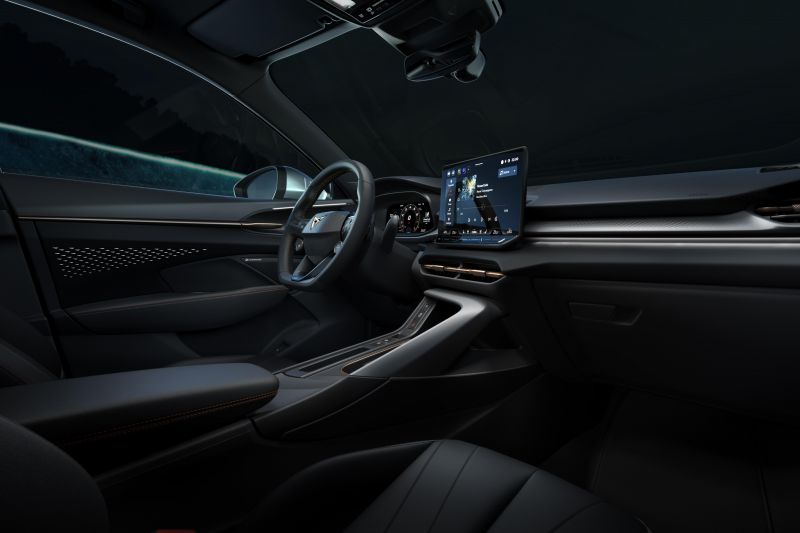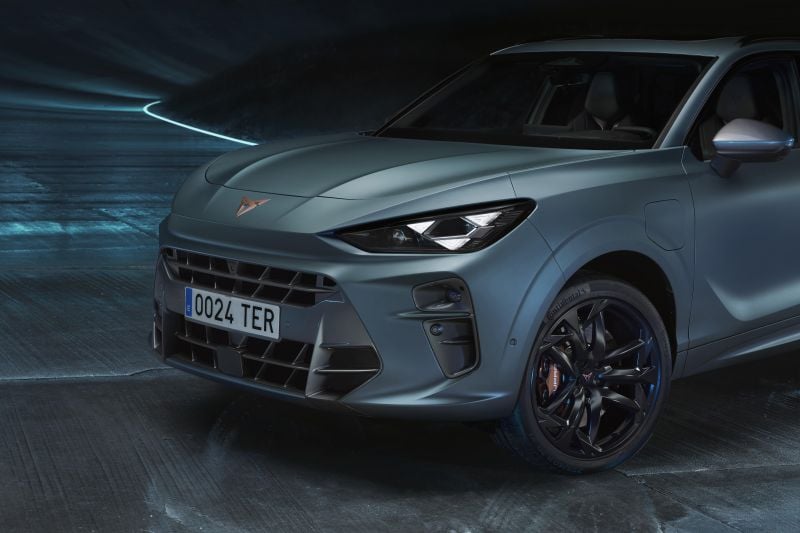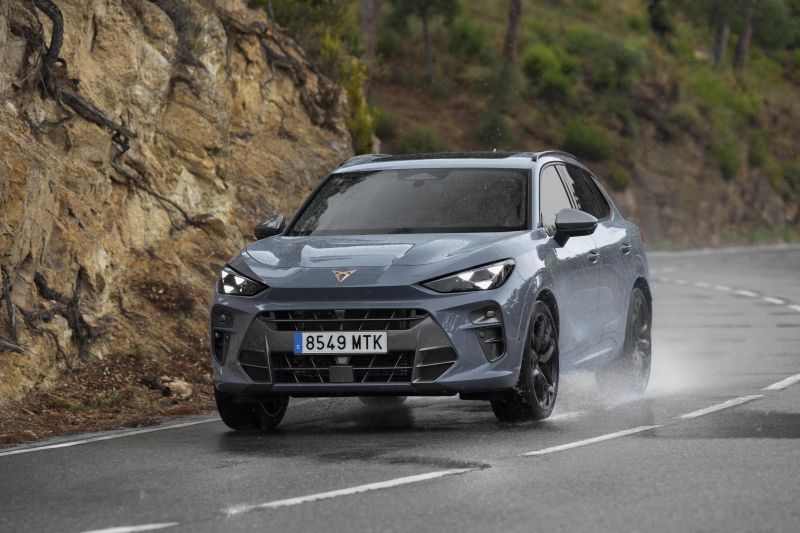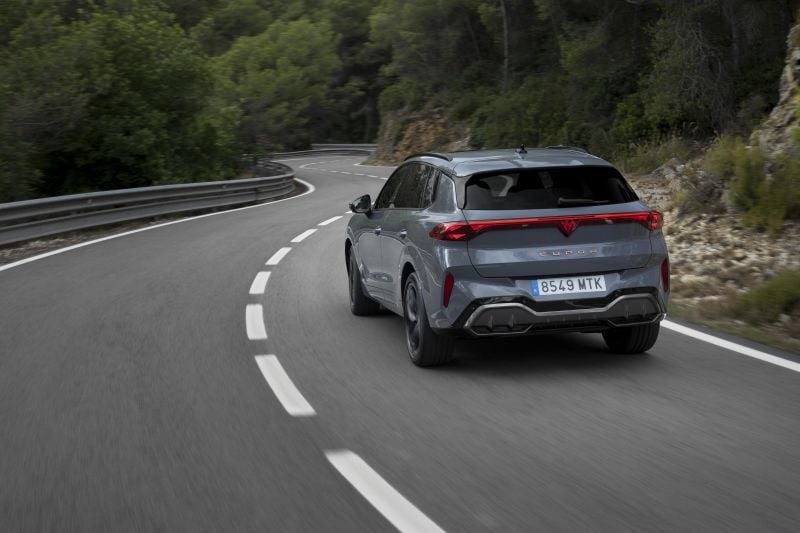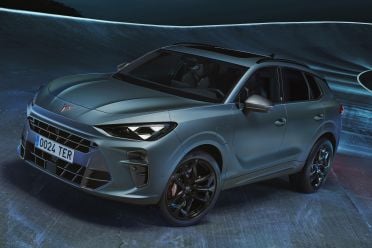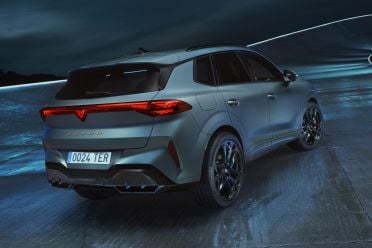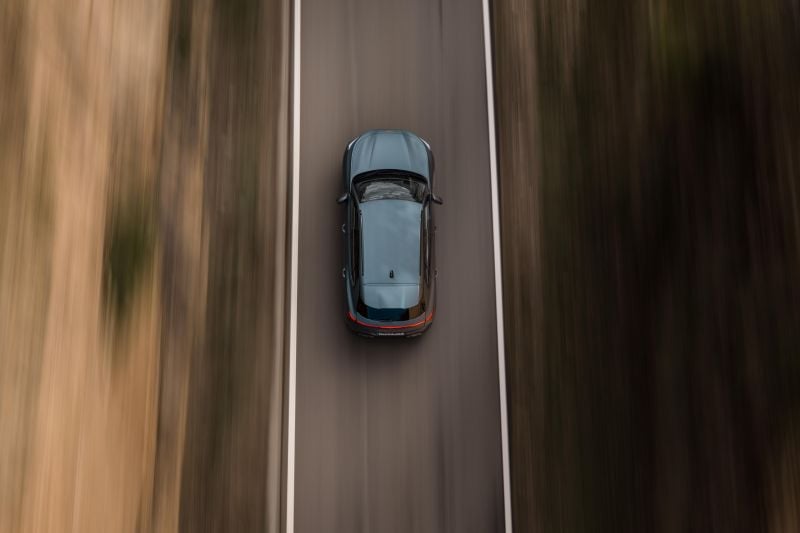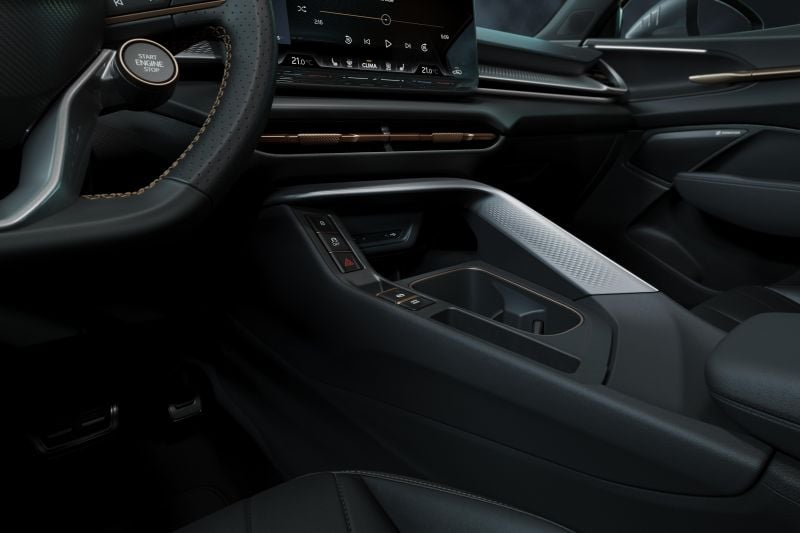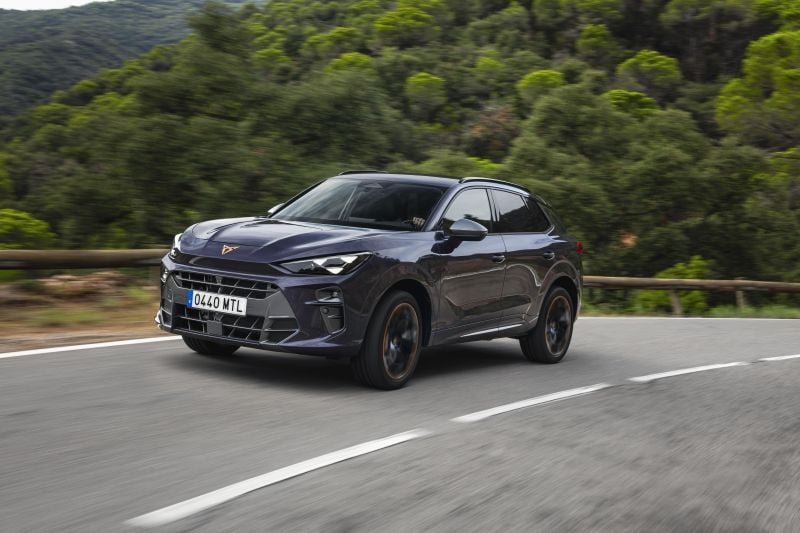Cupra understands the market, and it gets not everyone wants a coupe-style swoopy SUV like the Formentor.
And that’s why there’s a Terramar, which is a Volkswagen Tiguan-sized, boxier SUV – but still with the Spanish brand’s stunning design ethos applied, inside and out.
Indeed, it’s a styling- and smarts-focused model, with a five-seat layout, a sizable boot, and a clever interior with sliding second-row seats and a heap of practical interior stuff, too.
This new-generation five-seat SUV is closely related to the upcoming all-new Audi Q3, which the Terramar will be built alongside in the same Hungarian factory. It shares the MQB Evo underpinnings found beneath the new VW Tiguan, as well as the general powertrain lineup globally.
That’s right – this is an all-new vehicle that isn’t fully electric – it has a series of petrol options, including mild-hybrid, plug-in hybrid and pure internal combustion. We drove the latter just one day after the car was revealed in Barcelona, and well ahead of the global launch drive.

How much does the Cupra Terramar cost?
Cupra hasn’t yet confirmed exact pricing, but local execs have indicated a starting price “in the $50,000s” is likely.
The base model, likely with the new 1.5-litre eTSI mild-hybrid engine and front-wheel drive, will form the basis of proceedings.
You can expect it to sit alongside the Formentor in terms of the full range, too – so, the confirmed 195kW 2.0-litre TSI could be around $60k, and the plug-in hybrid about $65k. But, that’s all still to be confirmed.
What is the Cupra Terramar like on the inside?
Cupra has clearly decided that it needs similar, but not identical, cabins across its model lines, and so there’s an air of familiarity to the Terramar’s interior.
For instance, there are copper trim highlights in abundance, quality-feeling materials and – thankfully – a leather-lined steering wheel with physical buttons and scroll dials rather than haptic controls.
The dashboard design includes some textural components with a horizontal bar to make the cabin look wider, and there’s a big 12.9-inch touchscreen display which has a more logical menu design than in earlier Cupra models, but still has haptic volume and temperature control sliders below the screen which simply aren’t as easy to use as physical buttons or dials.
That media screen features the stuff you’d expect, like wireless Apple CarPlay and Android Auto; as well as built-in satellite navigation. It’s also the control centre for loads of the important interactions you might want to have with the car.
It responds quickly, and features a ‘pull down’ favourites menu so you can make fast adjustments to certain elements of the car – for instance, if you don’t want the speed sign recognition or the lane-keeping on, you can set up quick ‘off’ buttons there.
Furthermore, if you prefer to use the steering wheel controls to do that, you can by hitting the safety systems button on the steering wheel, and then turning off those same nannies using buttons there. That was my preferred way, as it means you don’t need to dilly-dally.
My time in the Terramar was brief, so we will go into more detail on the screen for our local launch drive in due course.
But the general cabin practicality is good, with large bottle holders in the doors, a pair of cupholders between the front seats, a wireless phone charger and USB-C ports below the centre stack, and a nifty ‘boomerang’ shaped divider between the front seats to delineate the driver’s zone and passenger space.
In the second row there’s a handy sliding seat to allow more boot or passenger space if required, plus the seat backs feature recline adjustment as well.
My 182cm frame could slide in behind my preferred driving position with ample space to wiggle my legs and feet, while headroom was also impressive considering the car had a large panoramic glass roof with a shade.
There is, however, a transmission tunnel to contend with, so three big-footers across the back might be a squish.
Of course there are ISOFIX child seat anchor points and three top tethers, and amenities are family-friendly such as bottle holders in the doors; a flip-down armrest with cupholders in the middle’ and even a third zone of climate control with directional air-vents; plus USB-C charge ports. But, there are no map pockets on the seat backs.
One thing that let the back-seat experience down a tad, though, was the scratchy hard plastics on the door tops. Good for parents with grubby children, however, as it’s easier to wipe that sort of trim down.
Boot space is good at 540 litres with the rear seats in their rearmost position, and that increases to 630 litres if you slide the rear seats forward. The PHEV is expected to have a smaller boot area, due to battery storage being located under in the boot area (UK reports suggest 400-490L).
No spare wheel – just a tyre repair kit, combined with tyre pressure monitoring as standard – in the vehicle I tested, but it’s not confirmed yet what the Aussie-spec range will have.
What’s under the bonnet?
Guaranteed for our market is the same 195kW 2.0-litre turbo-petrol engine seen in the updated VW Golf GTI and the new-gen Tiguan, which offers up peak torque of 400Nm. The standard transmission is a seven-speed DSG dual-clutch unit, and it has all-wheel drive as standard.
Otherwise, you can bank on the new 1.5 TSI plug-in hybrid (PHEV) too, with 200kW of power and an expected EV range claim of more than 100km. That model will offer 11kW AC and 50kW DC charging, and you can expect the claimed fuel use figure to be very low.
Base engine? You bet there’ll be one, but it’ll also have a form of electrification. The brand is rolling out the 1.5 eTSI unit across its model lines, with the 110kW/250Nm powertrain adding 48V mild-hybrid tech to reduce consumption and emissions. That one is still yet to be officially locked in for Australia, but our intel suggests it’s likely.
How does the Cupra Terramar drive?
The thing about Cupra’s models is they have a specific driving dynamic to them.
The Terramar? It’s not quite like the other Cupras – and that’s totally fine, because it will appeal to a different audience, and a different type of driver, too.
Expect all models to come with selectable drive modes, and the car I drove had an Individual mode to tailor things to your personal tastes, including 15-stage damper adjustment for a level of ride fine-tuning that isn’t offered in many other cars.
And even using the preset modes, the suspension and chassis settings all impressed in terms of offering comfort, control and convincing handling in corners. I actually liked the way the car was in Comfort mode, with a smoothness and pillowy nature that no other Cupra is imbued with.
It steers honestly, and less pointily than some other Cupra models.
That’s no bad thing – other Cupras can be a bit twitchy at the tiller – but the Terramar has a touch more of a Volkswagen-style feel to the steering. Trust me, I drove 10 different Cupra, Skoda and VW models over 10 days as part of the trip that led me to this conclusion.
The 195kW 2.0 TSI petrol engine is a sweet bit of kit too, with a heap of smooth-revving pulling power and a dollop of torque for easy going driving when you’re not hustling.
If you do need to get somewhere swiftly, it has ample pace and feels strong through the rev range, with the seven-speed DSG dual-clutch auto offering snappy changes with that typical intelligence you’d expect from being teamed to a high-output turbo-petrol engine – the brand, though young, has a strong record of getting its powertrains (borrowed from the VW Group) right in most every instance.
Admittedly there’s some low-rev lag when you’re in stop-start traffic, when the engine’s idle-stop tech, transmission and turbo lag work together to offer a slight hesitancy in some situations – but really, it’s far less of an issue than in previous products from the VW Group.
We might have to reserve judgement on the road noise intrusion, as the roads in Spain weren’t identical to the coarse-chip highways and country roads of Australia – but initially I found it to be pretty hushed over mixed road surfaces.
On the whole I came away feeling that while the Terramar has a more sedate and approachable drive experience that isn’t as dynamic or dramatic as other Cupra models, that could work in its favour. It will very much hit the mark for an SUV buyer who wants a really sporty looking vehicle, while not punishing them for having exactly that.
What do you get?
Final specifications for the Australian-market Cupra Terramar are set to be revealed next year. There will likely be multiple grades, but it’s too early to say exactly what is going to be offered in terms of standard spec.
Here’s a guide of what to expect to be offered, depending on the grade:
- Matrix LED headlights
- LED daytime running lights
- LED tail lights
- Keyless entry with proximity (walk-up) unlock, lock
- Push-button start
- Electric tailgate
- 19- and 20-inch wheels
- Panoramic glass roof to be offered
- SEAQUAL YARN trim, or Dinamica micro-suede
- Using recycled textiles or leather with plant-based tanning
- Electric seat adjustment
- Dual-zone climate control
- Heated and ventilated front seats
- Heated steering wheel
- Heated rear seats
- Digital cockpit
- 12.9-inch touchscreen media system
- Satellite navigation
- Wireless Apple CarPlay and Android Auto
- Wireless phone charging
- 4 x USB-C ports
- Charging cables (PHEV)
Is the Cupra Terramar safe?
There’s no Euro NCAP or ANCAP rating for the Terramar just yet, but it has the full suite of safety technology and equipment you would expect of a new-generation vehicle.
Standard safety equipment in Europe includes:
- Autonomous emergency braking
- Pedestrian, cyclist, junction detection
- Adaptive cruise control with Traffic Jam Assist
- Lane keep assist
- Blind-spot assist
- Rear cross-traffic assist
- Surround-view cameras
- Front, rear parking sensors
- Intelligent speed sign recognition
- Driver attention monitoring
How much does the Cupra Terramar cost to run?
No details on the specifics yet, but you will be getting a five-year, unlimited kilometre warranty for the car itself, and an eight-year warranty for the battery pack if you choose the plug-in hybrid.
If it’s like other Cupra models, there will be a prepaid service plan on offer, with maintenance intervals expected to be every 12 months/15,000km for all versions. The current range has the choice of three- and five-year service packs.
Cupra is expanding its network of service locations across the country as a means of gearing up for its model expansion, so in the years to come you should be closer to a Cupra-ready workshop than in the initial launch phase for the brand.
And if you’re in an eligible catchment area, if you prepay for a five-year plan you’ll also get concierge service, meaning the workshop will collect and return your car to you.
CarExpert’s Take on the Cupra Terramar
All the ingredients seem to have come together for the Terramar – it’s stylish, swanky, smart, and smooth to drive.
This is going to be a vital addition to the Spanish brand’s lineup in Australia, and could well prove to be the most popular vehicle in the range, provided it’s priced right when it lands in the new year.
Click the images for the full gallery
MORE: 2025 Cupra Terramar: Sporty Tiguan cousin confirmed for Australia with plug-in power





